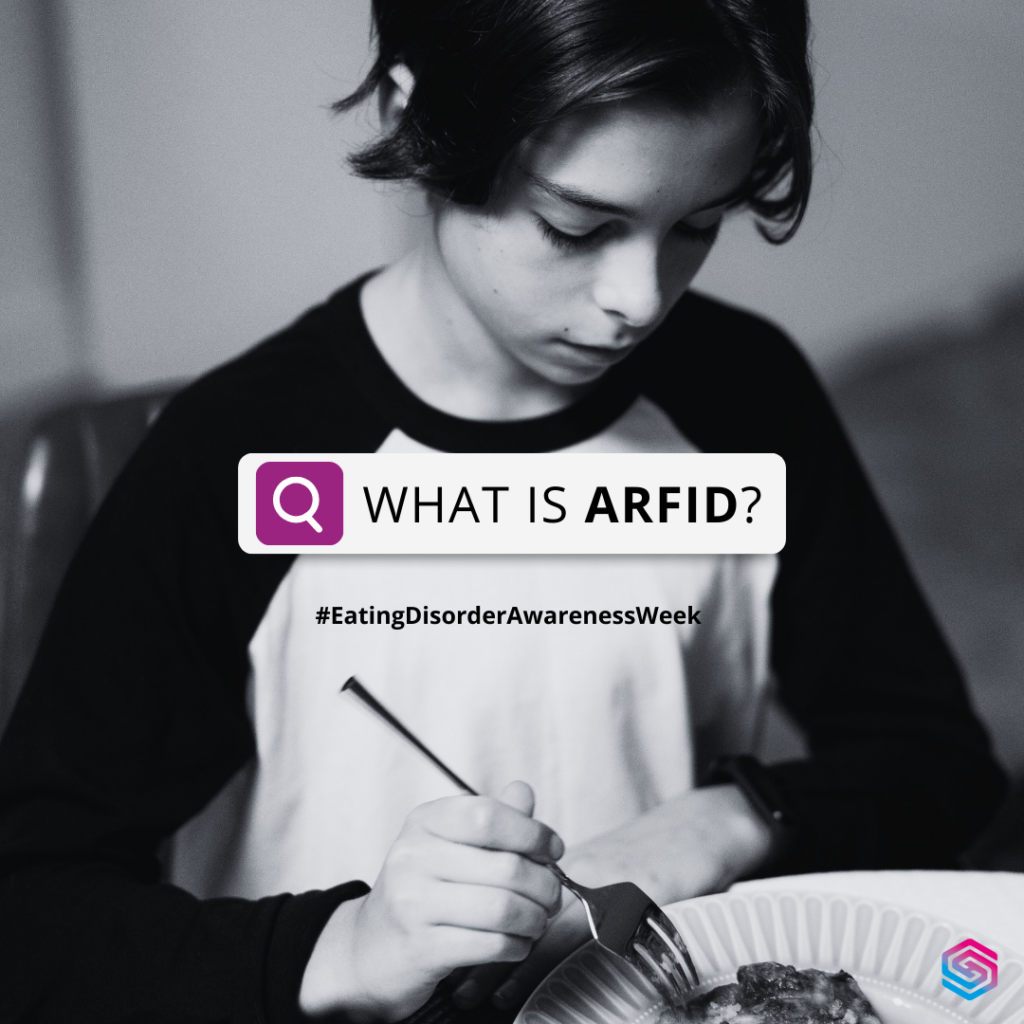Check out this Harcourt Health article we were mentioned in!
Eating Disorders Awareness Week is an annual opportunity to raise awareness of eating disorders and their impact on the individuals and families who live with them.
This year, the national eating disorders charity, Beat, has chosen to shine a light on ARFID, a lesser-known but pervasive eating disorder diagnosis that can hugely disrupt someone’s life and relationships.
What is ARFID?
ARFID, or Avoidant/Restrictive Food Intake Disorder, is an eating disorder characterised by avoidant or restrictive food preferences, impacting approximately 1% of children and 5% of adults.
Previously coined ‘Selective Eating’, ARFID was only added to the Diagnostic Statistical Manual (a tool used globally to assess and diagnose mental illnesses) in 2013, and is therefore a relatively unknown eating disorder despite the significant number of individuals struggling.
ARFID affects individuals of all ages, including children, adolescents, and adults. However, it is particularly common in early childhood and can persist into adulthood if left untreated.
There are many different types of ARFID, but someone’s experience tends to fall into one of the following categories:
- Sensory sensitivity (disliking certain food textures or colours)
- Lack of interest in eating
- Fear of aversive consequences (such as a phobia)
- Limited food preferences
Living with ARFID can mean only living with a select few ‘safe’ foods, whilst avoiding foods that otherwise might cause extreme anxiety, fear or discomfort. This can severely impact someone’s life and relationships, as social eating or eating with family can become extremely challenging.
Alongside the social challenges, individuals can feel a lot of shame associated with their symptoms, particularly if they’ve struggled for a long time.
Signs and symptoms of ARFID
Like other eating disorders, there is no ‘one way’ to experience ARFID, meaning that each person’s experience will be unique to their individual history and experiences with food and eating.
That said, there are some key behaviours and beliefs toward food that can help with diagnosis and treatment, such as:
- Extreme selectivity in food choices
- Avoidance of certain textures or smells
- Limited variety in the diet
- Difficulty meeting nutritional needs
- Physical symptoms, including weight loss, nutritional deficiencies, and impaired growth in children
What causes ARFID?
The exact causes of ARFID are not fully understood, and this is likely because they differ person to person.
Some may develop ARFID after experiencing a traumatic event with food – such as choking or vomiting. Here, the avoidant/restrictive symptoms may manifest as more of a phobia with food, with high anxiety and fear around the consequences of eating certain things.
Others may experience ARFID because they have a co-occurring diagnosis of Autism Spectrum Disorder (ASD). People with ASD can experience greater sensitivities towards certain food textures or colours, meaning that they might struggle to eat certain foods and opt for ‘bland’ items that are less stimulating.
It’s important to highlight that ARFID is never solely a matter of choice or preference, rather, there are often co-occurring underlying concerns that cause someone to restrict or avoid food. In this way, we can recognise that the symptoms have a protective intention to move someone away from fear and towards safety. It’s for this reason that individuals living with ARFID must be offered compassion for finding a way to cope through challenge.
How ARFID differs from other eating disorders
Unlike other eating disorders, ARFID is not driven by concerns about weight or body image. This means that there is no underlying intention to restrict or control food in an attempt to reduce body weight or size.
This difference has implications for treatment, as someone may not benefit as much from typical approaches to eating disorder treatment, requiring instead a more bespoke and specialised approach.
ARFID myths and misconceptions
Having only been added to the DSM in 2013, there is limited societal and medical awareness surrounding ARFID, and this can lead to myths and misconceptions that create barriers to someone accessing support.
Individuals with ARFID often find themselves being labelled as “picky eaters”, however, this undermines the psychological and physiological severity of someone’s symptoms, leading to confusion and feelings of shame around the behaviours and preferences.
Picky Eater
Individuals with ARFID often find themselves being labelled as “picky eaters”, however there are significant differences between someone who is a picky eater, and someone with ARFID.
Psychologically speaking, ARFID often involves psychological factors that go beyond mere preferences and significantly impact a person’s ability to eat a varied diet. Whereas, “picky eating” is more rooted in personal preferences as opposed to aversions.
What’s more, someone with ARFID will often only eat a limited range of foods and struggle to adapt to new or unfamiliar foods, impacting social interactions. However, someone with picky eating might be more willing to try new foods over time or within certain social situations.
Lastly, ARFID can lead to significant medical complications, such as nutritional deficiencies, electrolyte imbalances, and impaired physical health. While picky eating can cause some nutritional imbalances, the risk is generally not as extreme or impactful.
Treating ARFID
It’s important to know that recovery from ARFID is possible, but specialist treatment by an experienced clinician is necessary.
Dietitians and psychologists will be interested in understanding the underlying fears or concerns someone has so that they can best assess a way forward with treatment.
For instance, if someone has had a traumatic experience with food, they may require gentle and gradual exposure to the fear so that it is normalised and begins to feel safe once more. If someone struggles with certain textures, they may be supported with finding other ways to eat specific foods so that they can benefit from the nutritional value without confronting discomfort.
The goal for treatment is to support someone with expanding their feelings of safety around food so that they can introduce more variety and enjoy the freedom and flexibility this gives them across all areas of their life.








